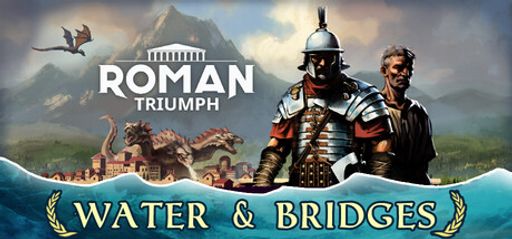 Roman Triumph grabbed me right away because it rewards quick, strategic decisions. The systems for wall gaps, ballista reloads, and rally points feel like they were built for optimization. You’re not just reacting to attacks — you’re planning seconds ahead, almost like a real-time speed puzzle. I found myself timing defense rotations like laps in a race, shaving travel time off patrol routes. Performance does dip with big cities — one player mentioned a 3,100-population settlement running at around 13–18 FPS — so the CPU clearly struggles under load. But for a small team, it’s impressive how much complexity they built in before optimization. You can tell Coreffect Interactive focused on depth first, polish second, which honestly feels right for this genre.
Roman Triumph grabbed me right away because it rewards quick, strategic decisions. The systems for wall gaps, ballista reloads, and rally points feel like they were built for optimization. You’re not just reacting to attacks — you’re planning seconds ahead, almost like a real-time speed puzzle. I found myself timing defense rotations like laps in a race, shaving travel time off patrol routes. Performance does dip with big cities — one player mentioned a 3,100-population settlement running at around 13–18 FPS — so the CPU clearly struggles under load. But for a small team, it’s impressive how much complexity they built in before optimization. You can tell Coreffect Interactive focused on depth first, polish second, which honestly feels right for this genre.
 Exactly. You can sense that long-term design mentality in how the systems connect. More than seventy distinct Roman buildings? That’s a dream for completionists. Every structure has purpose — from population control to resource flow — and unlocking them all becomes its own meta-goal. The god mechanics layer on top of that beautifully, giving you events, blessings, and disasters that stretch across campaigns. It’s a game that encourages perfection through planning, not repetition. That said, the grid alignment issue is real; misaligned footprints make efficient layouts harder to execute, which frustrates players who love symmetrical design or 100% completion runs. Still, the massive tech tree redeems it. Late-game unlocks reward meticulous play and make every upgrade feel earned.
Exactly. You can sense that long-term design mentality in how the systems connect. More than seventy distinct Roman buildings? That’s a dream for completionists. Every structure has purpose — from population control to resource flow — and unlocking them all becomes its own meta-goal. The god mechanics layer on top of that beautifully, giving you events, blessings, and disasters that stretch across campaigns. It’s a game that encourages perfection through planning, not repetition. That said, the grid alignment issue is real; misaligned footprints make efficient layouts harder to execute, which frustrates players who love symmetrical design or 100% completion runs. Still, the massive tech tree redeems it. Late-game unlocks reward meticulous play and make every upgrade feel earned.
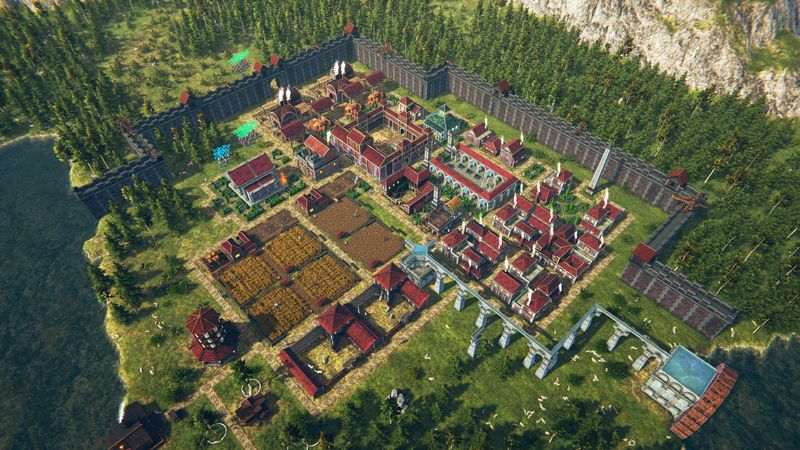
 For me, what really sets Roman Triumph apart is the sense of discovery. Every new map feels alive — procedurally generated layouts mean no two runs are the same. One playthrough might reveal hidden iron veins behind a mountain, while another drops a Hydra right on your trade route. Those mythological encounters give exploration purpose. I love how the gods don’t just act as background lore but as living systems that influence everything you build. You’re constantly adapting to divine moods, like an ancient city-builder mixed with survival tension. And since Forklift Interactive tends to back smaller devs, it’s great seeing that partnership bring more visibility to this kind of ambitious indie design. The result feels both experimental and immersive.
For me, what really sets Roman Triumph apart is the sense of discovery. Every new map feels alive — procedurally generated layouts mean no two runs are the same. One playthrough might reveal hidden iron veins behind a mountain, while another drops a Hydra right on your trade route. Those mythological encounters give exploration purpose. I love how the gods don’t just act as background lore but as living systems that influence everything you build. You’re constantly adapting to divine moods, like an ancient city-builder mixed with survival tension. And since Forklift Interactive tends to back smaller devs, it’s great seeing that partnership bring more visibility to this kind of ambitious indie design. The result feels both experimental and immersive.
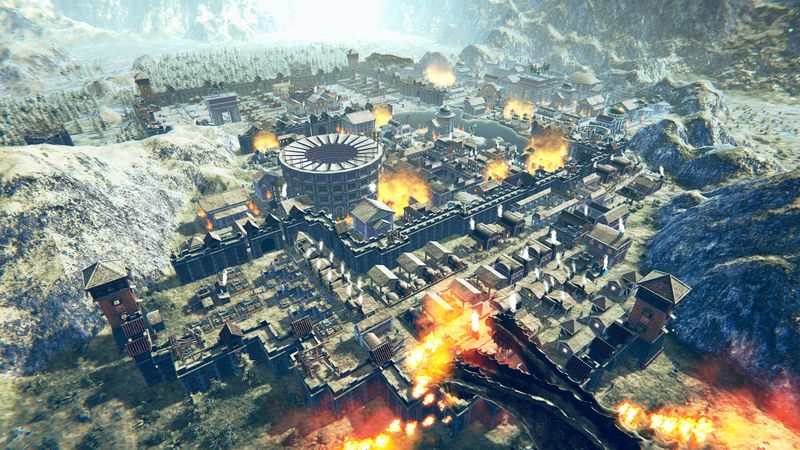
 That’s the beauty of it — the mechanics, economy, and combat all interlock. Legionaries, archers, and ballistae each play their part, but coordination matters more than raw numbers. When players complain about towers being crewed by untrained workers, that’s a sign of how much the game depends on precise unit behavior. AI quirks aside, the system has incredible potential. Once the pathfinding and crew assignment improve, it’ll hit the sweet spot between control and chaos. I also like how the economy supports strategy: your farm yields and trade lines directly determine how fast you can rebuild or reinforce defenses. It’s not just about constructing walls; it’s about maintaining the machine that keeps your city alive. Compared to Caesar IV or Diplomacy Is Not an Option, this feels like a hybrid — a city-builder where the battlefield never truly stops moving.
That’s the beauty of it — the mechanics, economy, and combat all interlock. Legionaries, archers, and ballistae each play their part, but coordination matters more than raw numbers. When players complain about towers being crewed by untrained workers, that’s a sign of how much the game depends on precise unit behavior. AI quirks aside, the system has incredible potential. Once the pathfinding and crew assignment improve, it’ll hit the sweet spot between control and chaos. I also like how the economy supports strategy: your farm yields and trade lines directly determine how fast you can rebuild or reinforce defenses. It’s not just about constructing walls; it’s about maintaining the machine that keeps your city alive. Compared to Caesar IV or Diplomacy Is Not an Option, this feels like a hybrid — a city-builder where the battlefield never truly stops moving.
 And that constant motion keeps me hooked. You can plan a perfect layout, but one divine tantrum can undo hours of work. It’s a test of adaptability. That’s what makes it fun for speedrunners — you’re not just executing a plan; you’re reacting with precision when chaos hits. It’s all about trimming downtime and optimizing reactions. I think that’s why emergent storytelling fits so well here. You’re writing your city’s survival story through your own efficiency.
And that constant motion keeps me hooked. You can plan a perfect layout, but one divine tantrum can undo hours of work. It’s a test of adaptability. That’s what makes it fun for speedrunners — you’re not just executing a plan; you’re reacting with precision when chaos hits. It’s all about trimming downtime and optimizing reactions. I think that’s why emergent storytelling fits so well here. You’re writing your city’s survival story through your own efficiency.
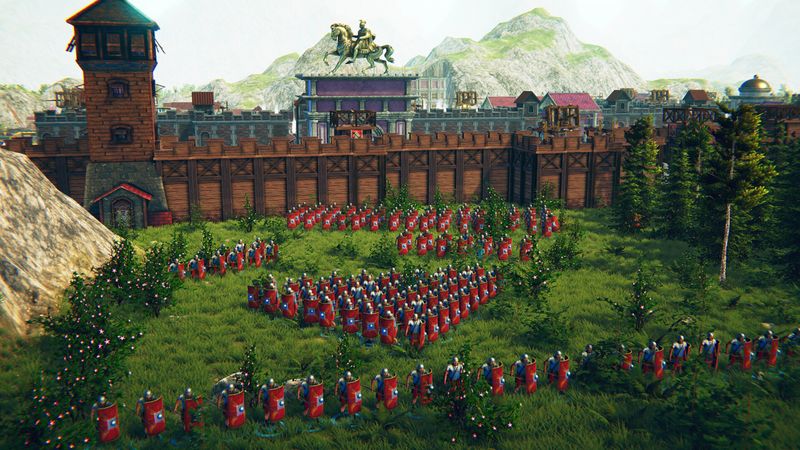
 Right, and those emergent moments create lasting narratives. The gods essentially act as dynamic characters — temperamental forces that challenge you to build smarter. You can feel the consequences of your choices ripple through the city. The pacing can swing wildly from calm prosperity to total catastrophe, but that’s part of its charm. It’s a living world. The minimal dialogue works for it too; the story emerges from cause and effect instead of cutscenes. That keeps it replayable and immersive for players who value outcomes over exposition.
Right, and those emergent moments create lasting narratives. The gods essentially act as dynamic characters — temperamental forces that challenge you to build smarter. You can feel the consequences of your choices ripple through the city. The pacing can swing wildly from calm prosperity to total catastrophe, but that’s part of its charm. It’s a living world. The minimal dialogue works for it too; the story emerges from cause and effect instead of cutscenes. That keeps it replayable and immersive for players who value outcomes over exposition.
 Visually, I think it captures that balance well. The earthy Roman palette, lush terrain, and procedural biomes make the world feel grounded and varied. It’s not trying to overwhelm you with realism — it’s focused on atmosphere. You can almost feel the dust on the frontier and the tension before a storm. The only thing I’d like more of is animation polish. Citizens move stiffly, and buildings just “pop” into completion. That said, indie developers often upgrade those elements post-launch. And the audio? Outstanding. Horns, strings, thunder — it all signals gameplay cues before visuals even catch up. When a Hydra roars, you know exactly what’s coming.
Visually, I think it captures that balance well. The earthy Roman palette, lush terrain, and procedural biomes make the world feel grounded and varied. It’s not trying to overwhelm you with realism — it’s focused on atmosphere. You can almost feel the dust on the frontier and the tension before a storm. The only thing I’d like more of is animation polish. Citizens move stiffly, and buildings just “pop” into completion. That said, indie developers often upgrade those elements post-launch. And the audio? Outstanding. Horns, strings, thunder — it all signals gameplay cues before visuals even catch up. When a Hydra roars, you know exactly what’s coming.
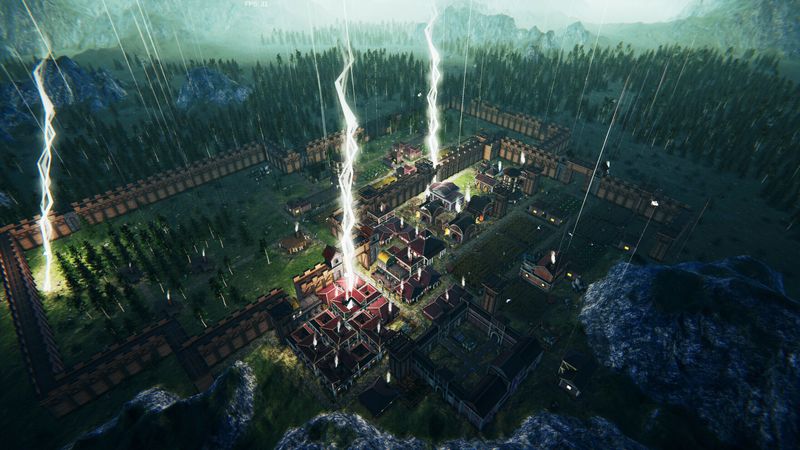
 The sound design really does carry a lot of weight. It’s not just ambience — it’s information. In the middle of chaos, those cues keep you one step ahead. I’d love to see them double down on that in future updates. As for systems, the citizens themselves work as subtle storytellers. Their happiness, hunger, and health data might look mechanical, but it’s what drives the emotional rhythm of the game. When you finally stabilize after a wave of disasters, it feels earned. That’s where Roman Triumph succeeds — it merges mechanics and emotion in a way that few city-builders attempt.
The sound design really does carry a lot of weight. It’s not just ambience — it’s information. In the middle of chaos, those cues keep you one step ahead. I’d love to see them double down on that in future updates. As for systems, the citizens themselves work as subtle storytellers. Their happiness, hunger, and health data might look mechanical, but it’s what drives the emotional rhythm of the game. When you finally stabilize after a wave of disasters, it feels earned. That’s where Roman Triumph succeeds — it merges mechanics and emotion in a way that few city-builders attempt.
 The challenge curve is definitely steep, though. If you don’t plan ahead, you’re going to lose entire districts fast. It’s brutal in the best way. That’s why I think accessibility options like automation toggles or variable difficulty levels would help newer players ease in without losing the challenge for veterans.
The challenge curve is definitely steep, though. If you don’t plan ahead, you’re going to lose entire districts fast. It’s brutal in the best way. That’s why I think accessibility options like automation toggles or variable difficulty levels would help newer players ease in without losing the challenge for veterans.
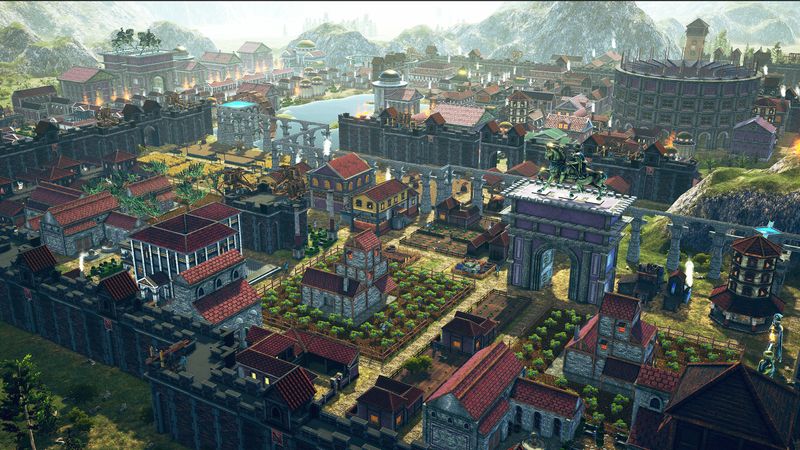
 Totally. The spikes are part of the identity, but having better onboarding tools — clearer tooltips, smarter AI, more difficulty sliders — would make it more approachable. Still, replay value is through the roof. Between the procedural generation, god mechanics, and tech tree, you’ll never play the same city twice. It’s the kind of game that encourages iteration — the more you learn, the better you perform next time.
Totally. The spikes are part of the identity, but having better onboarding tools — clearer tooltips, smarter AI, more difficulty sliders — would make it more approachable. Still, replay value is through the roof. Between the procedural generation, god mechanics, and tech tree, you’ll never play the same city twice. It’s the kind of game that encourages iteration — the more you learn, the better you perform next time.
 Yeah, it’s one of those titles that keeps surprising you. Exploration, trading, combat, mythology — all intertwined. Every new campaign feels like a story waiting to collapse in a different way. It’s not punishing just for the sake of it; it’s challenging because it reacts to you. I love that about it.
Yeah, it’s one of those titles that keeps surprising you. Exploration, trading, combat, mythology — all intertwined. Every new campaign feels like a story waiting to collapse in a different way. It’s not punishing just for the sake of it; it’s challenging because it reacts to you. I love that about it.
 And from a technical perspective, it’s a strong starting point. If Coreffect optimizes CPU usage — especially pathfinding and AI — and tightens unit behavior, this could easily stand alongside Banished or Frostpunk as a modern strategy staple. It already hits that balance between strategy depth and replay tension. Forklift’s backing gives me hope that post-launch updates will keep it evolving.
And from a technical perspective, it’s a strong starting point. If Coreffect optimizes CPU usage — especially pathfinding and AI — and tightens unit behavior, this could easily stand alongside Banished or Frostpunk as a modern strategy staple. It already hits that balance between strategy depth and replay tension. Forklift’s backing gives me hope that post-launch updates will keep it evolving.
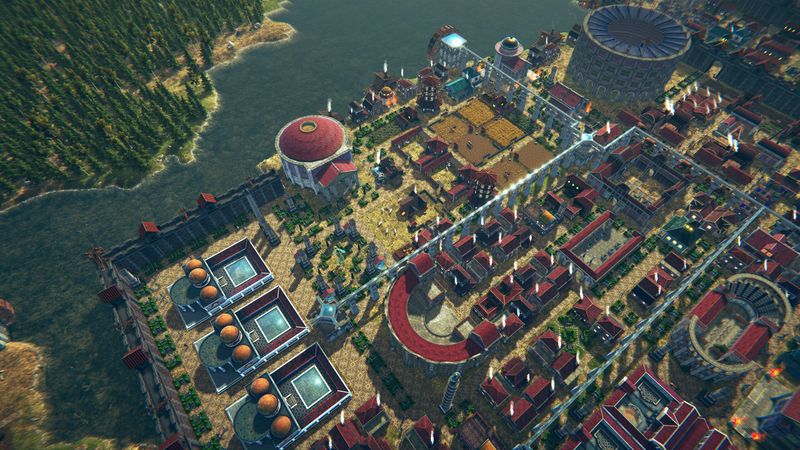
 So, final verdict? For me, Roman Triumph is one of those games that tests both reaction time and planning skill. It’s rare to see a builder where seconds matter this much.
So, final verdict? For me, Roman Triumph is one of those games that tests both reaction time and planning skill. It’s rare to see a builder where seconds matter this much.
 I agree. It’s a rewarding experience for players who love deep systems and steady progression. Once the rough edges get smoothed out, it’ll be a gem for completionists.
I agree. It’s a rewarding experience for players who love deep systems and steady progression. Once the rough edges get smoothed out, it’ll be a gem for completionists.
 I’m all in on the emergent storytelling. It’s one of the few city-builders where I genuinely feel part of the world’s mythology, not just its architecture.
I’m all in on the emergent storytelling. It’s one of the few city-builders where I genuinely feel part of the world’s mythology, not just its architecture.
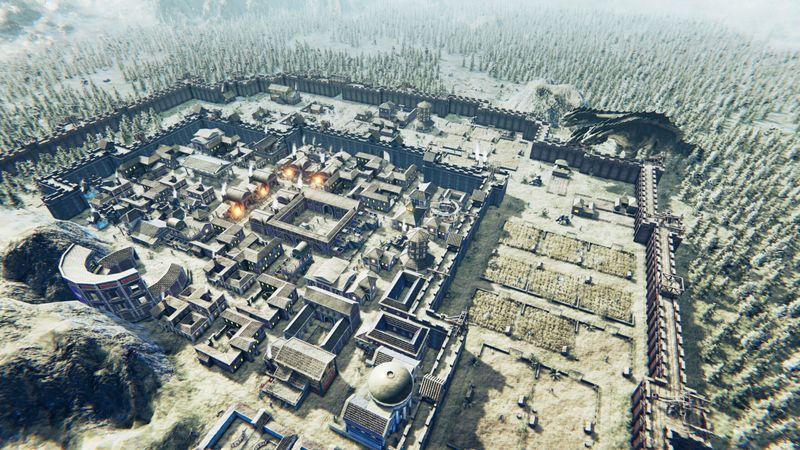
 Same here. It’s tactical, it’s challenging, and it’s got heart. If they keep refining it, Roman Triumph could become a benchmark for hybrid survival builders. Definitely worth adding to your Steam library.
Same here. It’s tactical, it’s challenging, and it’s got heart. If they keep refining it, Roman Triumph could become a benchmark for hybrid survival builders. Definitely worth adding to your Steam library.
 If you enjoyed Roman Triumph, you might like these similar games. Caesar III and Caesar IV capture classic Roman city-building with detailed layouts and economic planning. Meanwhile, Banished adds survival tension through strict resource management and unforgiving winters. Likewise, Frostpunk blends city-building with moral dilemmas, forcing hard choices during crises. In addition, They Are Billions combines tower defense and colony management for intense survival under siege. Finally, RimWorld offers deep simulation, mod support, and emergent storytelling that echo Roman Triumph’s dynamic, player-driven narratives.
If you enjoyed Roman Triumph, you might like these similar games. Caesar III and Caesar IV capture classic Roman city-building with detailed layouts and economic planning. Meanwhile, Banished adds survival tension through strict resource management and unforgiving winters. Likewise, Frostpunk blends city-building with moral dilemmas, forcing hard choices during crises. In addition, They Are Billions combines tower defense and colony management for intense survival under siege. Finally, RimWorld offers deep simulation, mod support, and emergent storytelling that echo Roman Triumph’s dynamic, player-driven narratives.
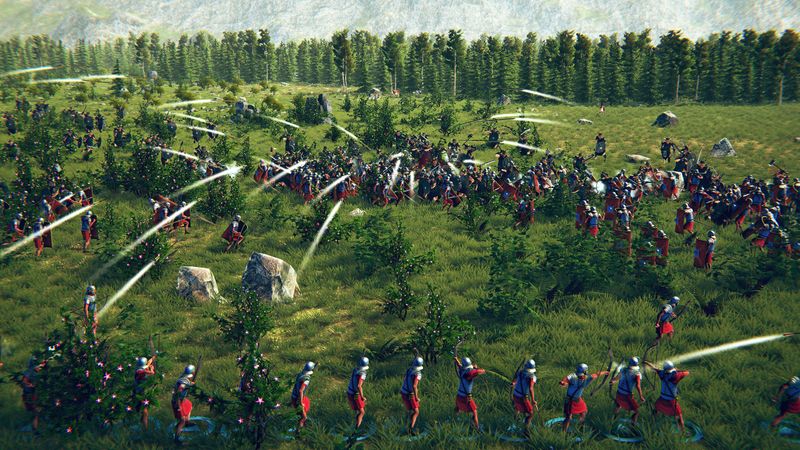
Add Roman Triumph: Survival City Builder to your games on Steam!

